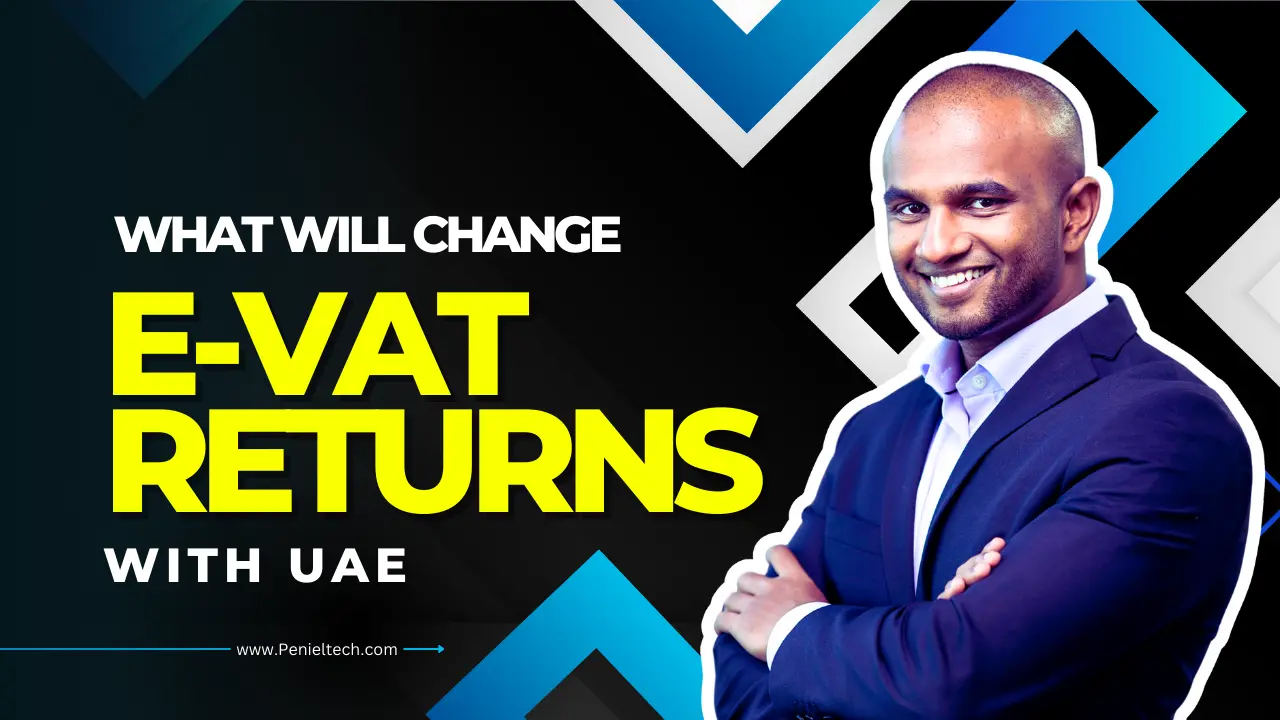UAE e-VAT Returns 2025
The UAE is no stranger to change. In fact, change is often the reason its business environment stays ahead of other countries in the region. Over the years, the region has witnessed lots of changes towards the future, including paperless governmental portals, smart payment setups, and plenty of software that saves time for businesses. And now, there’s another feather added to the cap: E-VAT returns.

UAE companies that have been filing VAT since 2018, the current method simply works for them. But from July 2026, e-VAT returns will no longer be though. After that period, businesses will need to submit their VAT returns to the EmaraTax portal using their account software.
The new system is meant to make the whole process lighter with less manual work, quicker submission, and more accurate data.
How VAT Filing Is Done Right Now
At the moment, businesses file VAT monthly, and sometimes quarterly, depending on their tax period. Here's the process they follow.
1. Gathering the Data
Before anything gets filed, you need to gather your sales and purchase records for the required period.
The data include:
- Company KYC details
- Sales invoices you sent to customers.
- Purchase invoices from suppliers.
- Any zero-rated or exempt transactions
- Credit and debit notes.
- Import/export details.
- Depreciation Schedules.
- Bank Statements.
- Receipts and Invoices.
- Payroll Records.
Expert VAT Consultation
Get professional guidance from certified VAT consultants to ensure your business stays compliant with UAE’s evolving tax laws.
Some companies have neat ERP systems to keep that data. While others are still piecing things together from spreadsheets and files.
2. Calculation
Then comes the part where accountants calculate:
- Output VAT: tax charged on what you sold
- Input VAT: tax you paid on what you bought
3. Filling the Return Form
This is the process where most companies slow down. Many of them hire accountants to get the VAT 201 form and check and reconcile the numbers to avoid costly errors. There are some more businesses that do these things manually.
4. Submitting and Paying
Once you fill out the form and are confident that the return is accurate, it’s time to submit it online and make the payment through the EmaraTax portal.
5. Keeping Records Safe
Even after filing, taxpayers need to keep all those records intact for at least five years.
The Challenges with This Way of Working
- It can take hours, even multiple days, if you don’t have all the data in one place.
- There’s always a chance of human error that can cost a lot.
- Manual entry makes everything slow and repetitive.
- There’s always a chance of missing deadlines and getting penalties.
VAT-Ready Software Solutions
Simplify VAT filing with automated, VAT-ready accounting solutions designed for UAE businesses of all sizes.
The New e-VAT Return System & How It Will Work
The idea behind e-VAT returns is pretty straightforward. The key agenda here is to remove as much manual work as possible.
Instead of your team gathering and re-entering the data itself, your system will work directly with the FTA's system.
1. Linking Your System to the FTA
Either your accounting or ERP software will directly connect to the FTA’s platform. The software will send the VAT-related data electronically in the right format.
2. Automatic Checks
As per the new system, the software will automatically flag any missing or mismatched numbers or data before you submit it.
3. Quicker Filing
With the data already there, you just need to review it, confirm if it's correct, and submit. So previously, what needed days can be done within minutes.
4. Instant Confirmation
Now you don’t need to wait, because you’ll get an instant digital acknowledgement right after filing your return.
5. All Records in One Place
Your past returns stay stored online in a clear, easy-to-access format. If you need them anytime for an audit or something else, you can easily access them.
Why Is It Good for Businesses?
The digital move to e-VAT return isn’t just beneficial for FTA: it’s fruitful for businesses too.
- You’ll spend less time filing.
- There’s less chance of mistakes.
- Compliance costs might go down (less overtime or external help).
- It’s cleaner, simpler, and more transparent.
This digitization was never about just making the tax easier. It’s another big step towards the UAE’s vision of a fully digital economy. The less time your team spends on admin work, the more they can contribute to growing your business. For investors, it’s proof that the country is serious about keeping the business environment efficient.
End-to-End Compliance Support
From VAT registration to return filing, our experts provide complete support so you can focus on growing your business.
There’s no issue in the current VAT process, but it takes lots of time and effort, while the e-VAT return system makes compliance simpler and encourages growth.
